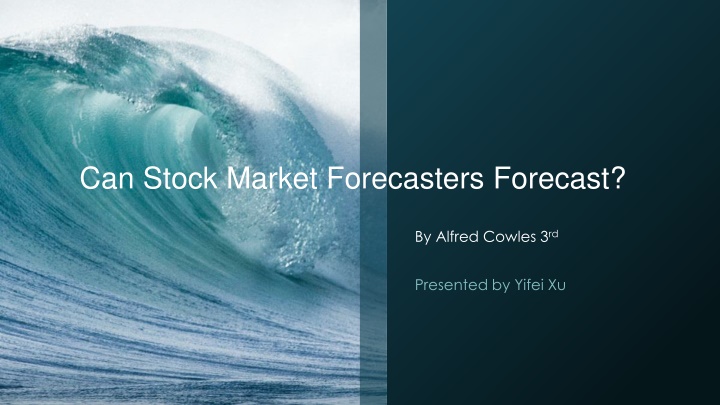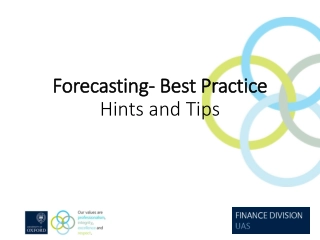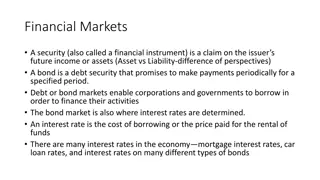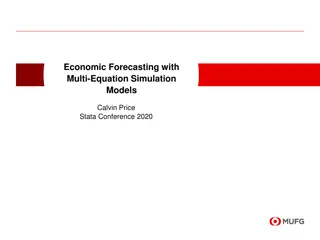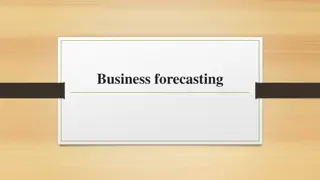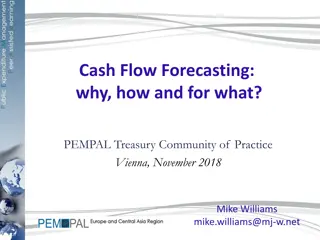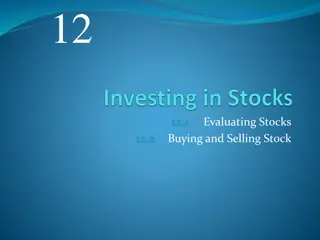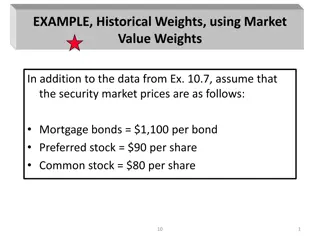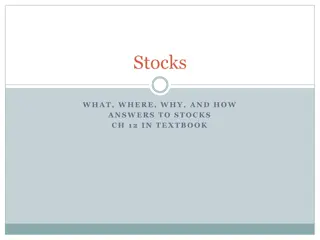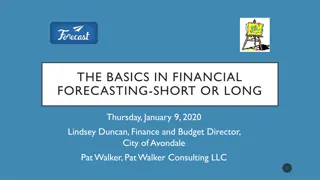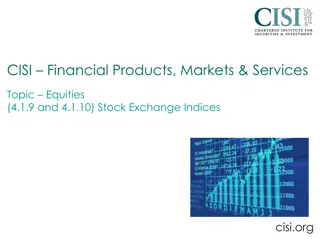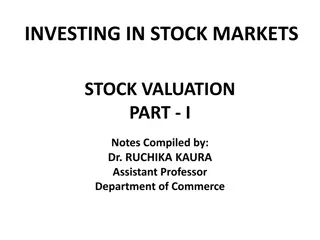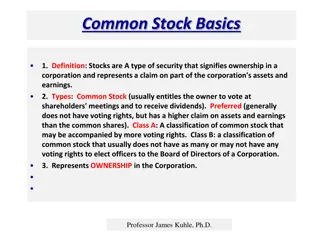Stock Market Forecasting Analysis
This paper by Alfred Cowles 3rd examines the efficiency of stock market forecasts from various professional agencies. It evaluates the forecasting accuracy on individual stock prices and the overall stock market trend. Results show limited success in stock price predictions by financial services, highlighting challenges in predicting market movements.
Download Presentation

Please find below an Image/Link to download the presentation.
The content on the website is provided AS IS for your information and personal use only. It may not be sold, licensed, or shared on other websites without obtaining consent from the author.If you encounter any issues during the download, it is possible that the publisher has removed the file from their server.
You are allowed to download the files provided on this website for personal or commercial use, subject to the condition that they are used lawfully. All files are the property of their respective owners.
The content on the website is provided AS IS for your information and personal use only. It may not be sold, licensed, or shared on other websites without obtaining consent from the author.
E N D
Presentation Transcript
Can Stock Market Forecasters Forecast? By Alfred Cowles 3rd Presented by Yifei Xu
Agenda Background information Introduction of the paper Efficiency of forecasts on individual stock prices Efficiency of forecasts on the stock market trend Statistical interpretations of results Summary My thoughts about this paper
Author: Alfred Cowles 3rd Alfred Cowles 3rd (1891-1984) graduated from Yale in 1913. He was an American economist, businessman, and founder of Cowles Commission. He was also a Fellow of the American Association for Advancement of Science, and a Fellow and Treasurer of the Econometric Society. Mr. Cowles s primary concern in 1932 was to elevate economics into a more precise science using mathematical and statistical techniques.
Introduction This paper presents results of analyses on stock market forecasts from 45 professional agencies. First part: Forecasting the course of individual stock prices Second Part: Forecasting the stock market according to the Dow Theory Third Part: Stock market forecasts of financial publications
Forecasting the course of individual stock prices Two groups of agencies: 16 leading financial services & 20 fire insurance companies Time span: 4.5 years, ending July 1932, of forecast records from financial services 4 years, from 1928 to 1931 inclusive, of stock transaction records from fire insurance companies Methods: 1. Record each week the buy or sale recommendations 2. Record each week the percentage gain or loss of each transaction as well as the stock market for the identical period 3. Every six months, compare the return generated by the recommendations to that of the stock market
Forecasting the course of individual stock prices Assumptions: Drop a stock from the list six months after it was last recommended due to the tendency of financial services to emphasize on successful forecasts and ignore unsuccessful ones Redistribution of fund in equal amounts among all stocks recommended every six months Results: Only 6 of the 16 financial services achieved any success. According to probability tests, if a service is on the right side of the market, we should expect 0.8 service in 16 services to be as good as service 1. It implies that the return of service 1 cannot be definitely attributed to skill. The weighted average of annual effective rate of all services is -1.43%
Forecasting the course of individual stock prices Assumptions: Only record actual purchases and sales made during the period of examination instead of the whole stock portfolio of each insurance company due to low turnover rate Stock purchases were given equal weights A stock is assumed to be sold 12 months after it was last purchased Results: Only 6 of the 20 companies achieved any success. The average annual effective rate of all companies is -4.72%, while the average of annual effective rate of the market is 1.2% A comparable result can be achieved through a purely random selection of stock.
What is the Dow Theory? The Dow Theory is an approach to trading developed by Charles H. Dow. It states that the market is in an upward trend if one of its averages (industrial or transportation) advances above a previous important high and is accompanied or followed by a similar advance in the other average. The theory is predicated on the notion that the market discounts everything in a way consistent with the efficient markets hypothesis. Different market indices must confirm each other in terms of price action and volume patterns until trends reverse.
Forecasting the stock market according to the Dow Theory Data source: 255 market forecasts of William Peter Hamilton(1867 1929), who was the fourth editor of the Wall Street Journal and a proponent of Dow Theory. Time Span: 26 years Assumptions: Doubtful = abstained from trading Bullish = long equal dollar amounts of the stocks included in the Dow Jones railroad and industrial average Bearish = short equal dollar amounts of the stocks included in the Dow Jones railroad and industrial average, cover only when he became doubtful or bullish
Forecasting the stock market according to the Dow Theory Results: From December 1903 to December 1929, William Peter Hamilton earned an annual return of 12% on the Dow Jones industrial average, while the market showed an annual return of 15.5% From December 1903 to December 1929, William Peter Hamilton earned an annual return of 5.7% on the Dow Jones railroad average, while the market showed an annual return of 7.7% In 90 forecasts of Dow Jones industrial average, William Peter Hamilton made bullish forecasts 29 times, 16 of them were profitable and 13 were not. He made bearish forecasts 23 times, 10 of them were profitable and 13 were not. He advised 38 times to withdraw fund from stock market, 19 of them were profitable and 19 were not. In 90 forecasts of Dow Jones railroad average, 41 of them were successful and 49 were not.
Stock market forecasts of financial publications Time Span: From January 1, 1928, to June 1, 1932 Sample Size: More than 3300 forecasts Market: Standard Statistics company index of 90 representative stocks Assumptions: There are 9 possible investment strategies: 100%, 87.5%, 75%, 62.5%, 50%, 37.5%, 25%, 12.5%, or 0% The effective return = one of the voted percentage above * actual rate of return
Stock market forecasts of financial publications Only 1/3 of the forecasts achieved any success.
Stock market forecasts of financial publications The extremer loss of the forecasters exceeds that of random records.
Summary All of the attempts mentioned in forecasting the movement of both single stock price and stock market have been proved to be unsuccessful.
My thoughts With the development of technology, there may be a small chance in the future that we can predict the stock market using AI and machine learning.
